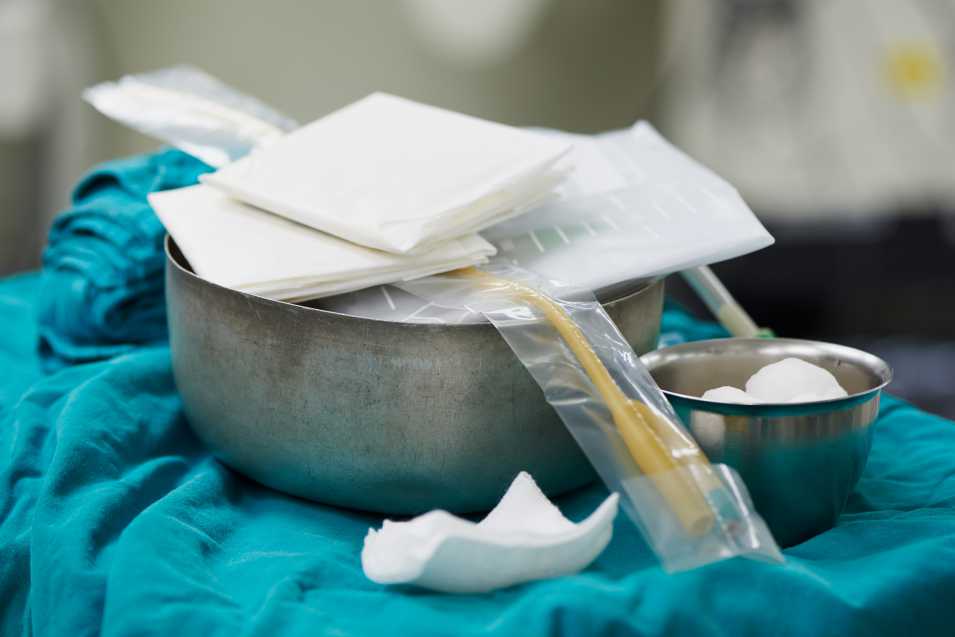A common disorder affecting a good portion of the population, especially among senior people, is incontinence. Many consumers, though, wonder whether Medicare covers the cost of incontinence products such pads and adult diapers. Does Medicare Cover Incontinence Supplies?
We will look at Medicare’s coverage choices today—including Medicare Part B and Medicare Advantage plans. We will also go into substitutes for coverage including Veterans’ Administration benefits and Medicaid. By the time this essay ends, you will be more adept at negotiating the complexity of Medicare coverage for incontinence supplies.
Medicare Coverage for Incontinence Supplies
Usually not covered by traditional Medicare, sometimes referred to as Original Medicare, are incontinence products such pads and adult diapers. Medicare Advantage plans and Medicare Part B offer some coverage choices. Let’s investigate these choices further.

Medicare Advantage Plans
Private insurance firms provide Medicare Advantage plans that might give coverage for incontinence products. While coverage can vary by plan, some Medicare Advantage plans offer benefits, including incontinence products. These plans often require you to purchase qualified items through approved providers.
The coverage limits for incontinence supplies can also vary, typically ranging from 200 to 300 briefs or diapers per month. To find out what goods are covered and what restrictions apply, see your Medicare Advantage plan’s coverage information.
Medicare Part B Coverage
While Medicare Part B generally does not cover incontinence supplies, there are certain circumstances in which Medicare may provide coverage for specific treatments related to incontinence. For example, if your doctor prescribes or recommends a particular treatment for incontinence, Medicare may cover it. Some examples of covered treatments include:
1. Pelvic Devices: Medicare started covering devices like Elitone in 2021, which use external pelvic stimulation to help reduce symptoms of incontinence.
2. Catheters: If your doctor has prescribed catheters due to permanent urinary incontinence or urinary retention, Medicare will reimburse up to 200 catheters per month. Additional medical requirements may apply.
3. Biofeedback Therapy: Medicare may cover biofeedback-assisted pelvic muscle exercise training to improve awareness of pelvic floor muscles if other forms of pelvic floor training have been unsuccessful.
4. Incontinence Control Devices: Medicare might cover treatments such as collagen implants to treat stress urinary incontinence.
5. Surgical Treatment: Medicare may cover recommended surgeries, such as bladder sling surgery, for incontinence.
It’s important to note that coverage for these treatments is contingent upon meeting specific medical criteria and obtaining a prescription from your doctor. If Medicare does not initially cover a recommended treatment or surgery, it is possible to file an appeal.

Medicaid Coverage for Incontinence Supplies in the States
Medicaid, a federal-state program designed for low-income individuals, can pay for incontinence items. States may have different Medicaid coverage policies for incontinence products; thus, it is crucial to know the particular policies of your state. Mostly states cover disposable adult briefs, pull-ups, bladder control pads, and bed underpads. Wipes and gloves may be covered in some states.
To qualify for Medicaid coverage of incontinence supplies, your physician must prescribe them for a medical condition. Your doctor will typically provide a written prescription specifying the quantity of supplies needed on a regular basis.
The method of receiving supplies can vary, with some states requiring you to obtain them from participating suppliers who submit claims for reimbursement. In contrast, others may provide supplies through managed-care plans.
To determine the coverage options and limitations in your state, it is advisable to contact your state Medicaid office. A complete list of state Medicaid offices can be found on the Medicaid website.
Related Article: Can I Laminate My Medicare Card?
Veterans’ Administration Benefits for Incontinence Supplies
You might be qualified to get incontinence products as part of your medical benefits if you are a veteran getting VA benefits. Usually either its Pharmacy Service or the Prosthetic and Sensory Aids Service, the VA supplies incontinence products.
If the standard issue brands do not meet your needs, you can work with your doctor to obtain a prescription or statement of medical justification for a specific brand of adult diaper or brief.
You should investigate the VA’s coverage alternatives in detail so that you may make an informed decision. Online resources and low-cost sampling programs can help you explore different brands and find the one that best suits your needs.
Related Article: Physical Therapy in NYC That Accepts Medicare
Alternative Coverage Options: Health Savings Accounts
If a person does not fulfill the requirements for Medicaid but also does not qualify for Medicare, they have the option of using a Health Savings Account (HSA) to pay for incontinence supplies.
Health Savings Accounts (HSAs) are commonly linked to health insurance plans that have high deductibles. These accounts serve the purpose of covering eligible medical costs as assessed by the Internal Revenue Service (IRS).
The deductibility of incontinence supplies may be contingent upon their necessity arising from a formally documented medical condition. Unused funds in a Health Savings Account (HSA) can build over time and are tax-free. Maintaining receipts as evidentiary documentation of expenditures and then presenting them to the plan administrator for reimbursement is of significant importance.
Another option to consider is a Flexible Spending Account (FSA) set up through your employer. Like HSAs, FSAs allow you to set aside pre-tax funds to cover qualifying medical expenses, including incontinence supplies.
The amount contributed to an FSA is determined by your projected healthcare expenses for the year. You can withdraw funds from the account throughout the year as needed to pay for qualified medical costs.
It is essential to work closely with your human resources manager or the plan administrator to confirm that your chosen plan covers incontinence supplies as qualifying expenses.

Steps to Take for Coverage
Having a correct diagnosis from your healthcare physician can help you to get coverage for incontinence products from any of the listed choices.
Rather than a stand-alone issue, incontinence is seen as a symptom or impact of an underlying medical condition. Thus, a diagnosis is required to prove the medical need of incontinence products.
Apart from a diagnosis, you probably need a documented prescription from your doctor proving the requirement of incontinence products. This prescription should clearly state the regularly needed supply quantities. Sometimes a doctor’s statement outlining your medical circumstances can also be useful.
Keeping all receipts as evidence of spending is crucial whether you buy incontinence products straight from funds from an HSA or FSA.
Although Original Medicare usually does not cover incontinence supplies, Medicare Advantage plans, and Medicare Part B may pay treatments and devices related to incontinence.
Medicaid, Veterans’ Administration benefits, and alternative coverage options like HSAs and FSAs can offer assistance.
By understanding each option’s specific guidelines and requirements, you can determine the best course of action to obtain coverage for incontinence supplies. Consult with your healthcare practitioner and insurance reps to verify you have the right documents and coverage.
